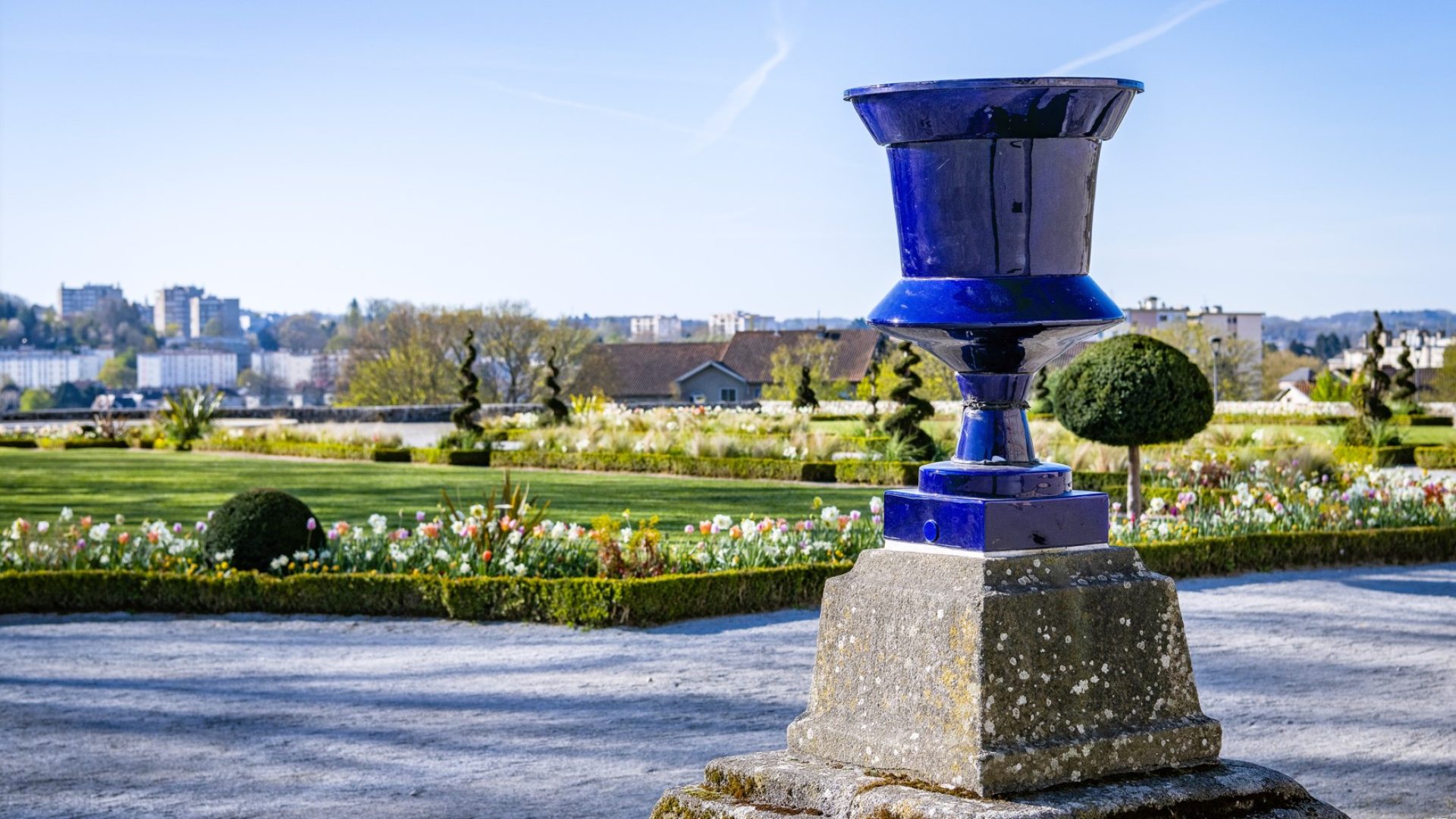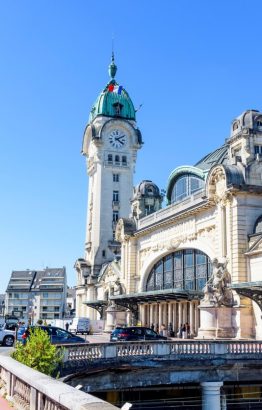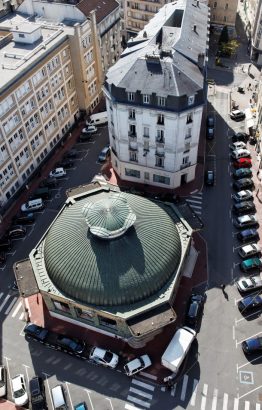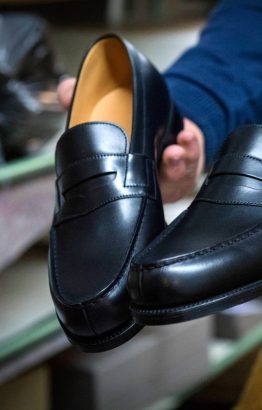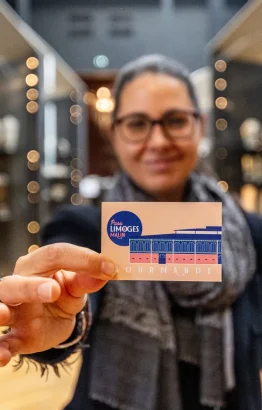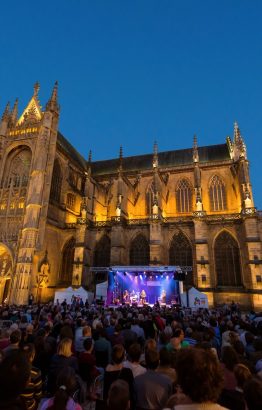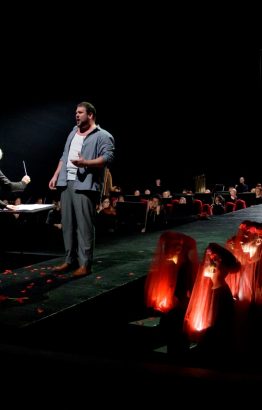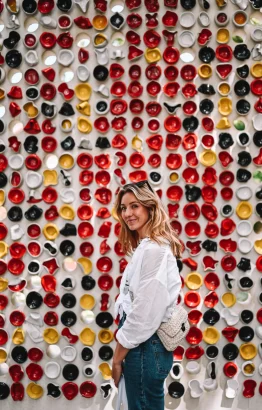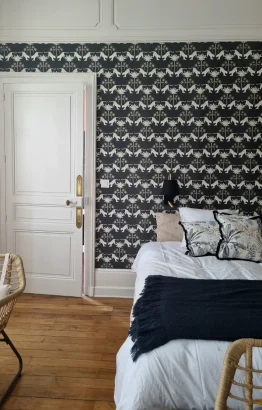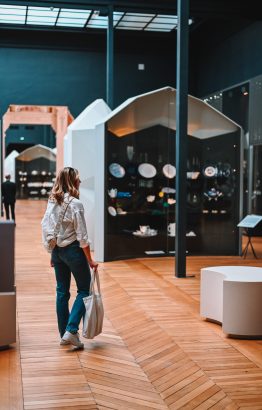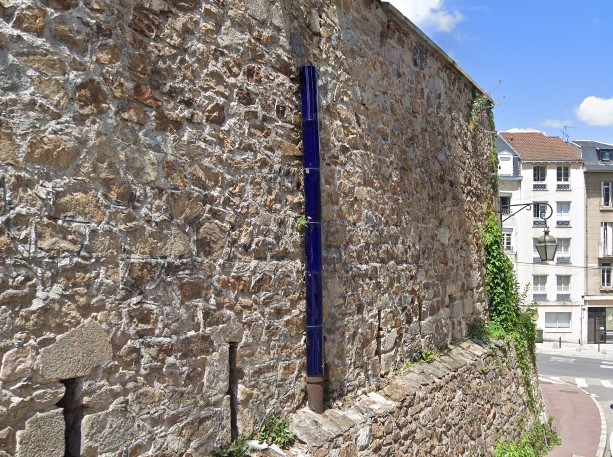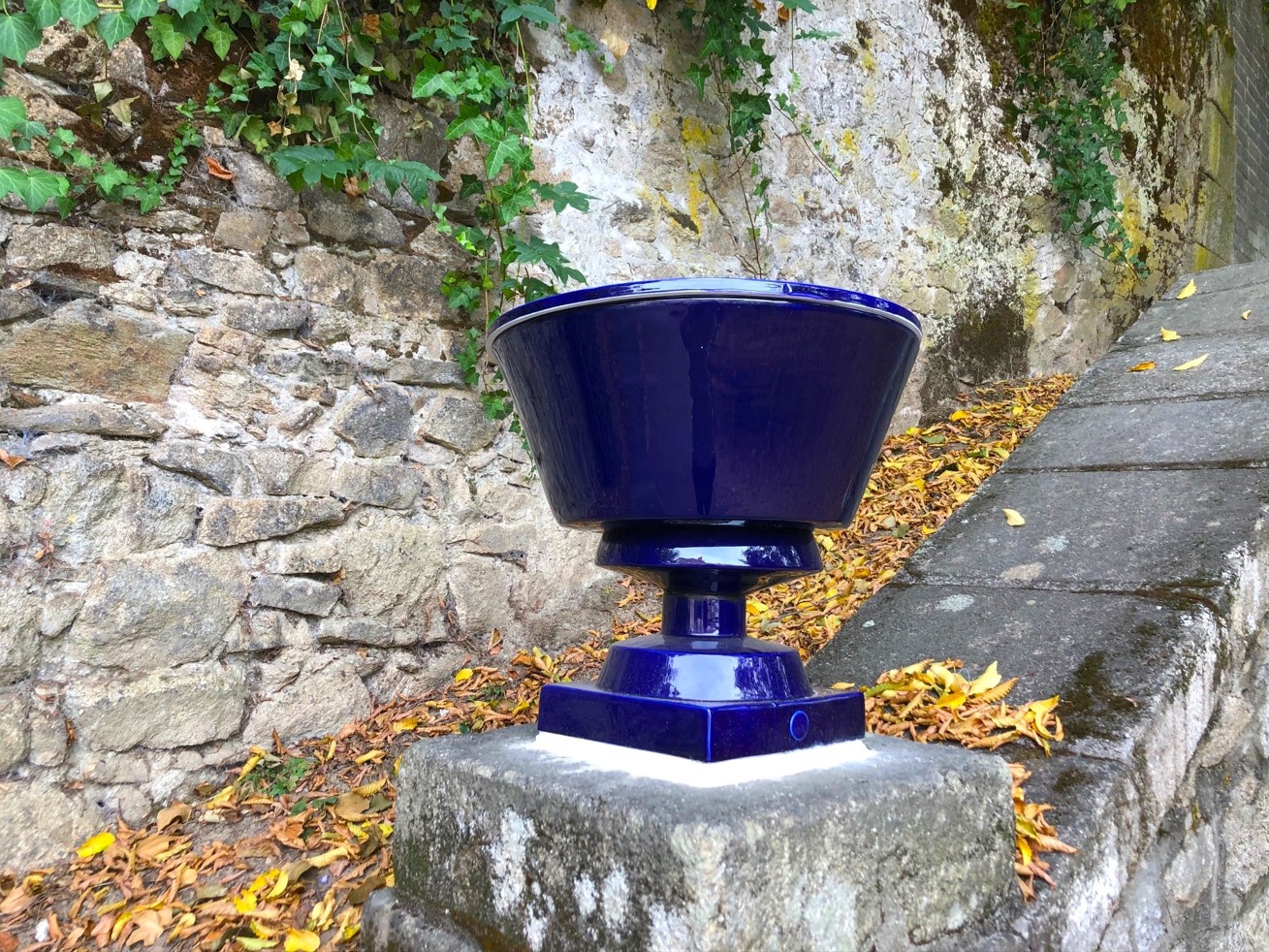The Verdurier pavilion
The project here is more a symbolic gesture than the creation of a new element. This is to replace the broken tile that we noticed on the facade of the Pavillon du Verdurier. The function of the gesture is twofold: it “repairs” the Pavilion while de facto integrating it into the discovery trail. This integration is done smoothly, without significant modification of the existing one. This is one of the somewhat secret parts of the project.
Source: FLORIAN BRILLET / NICOLAS LELIEVRE
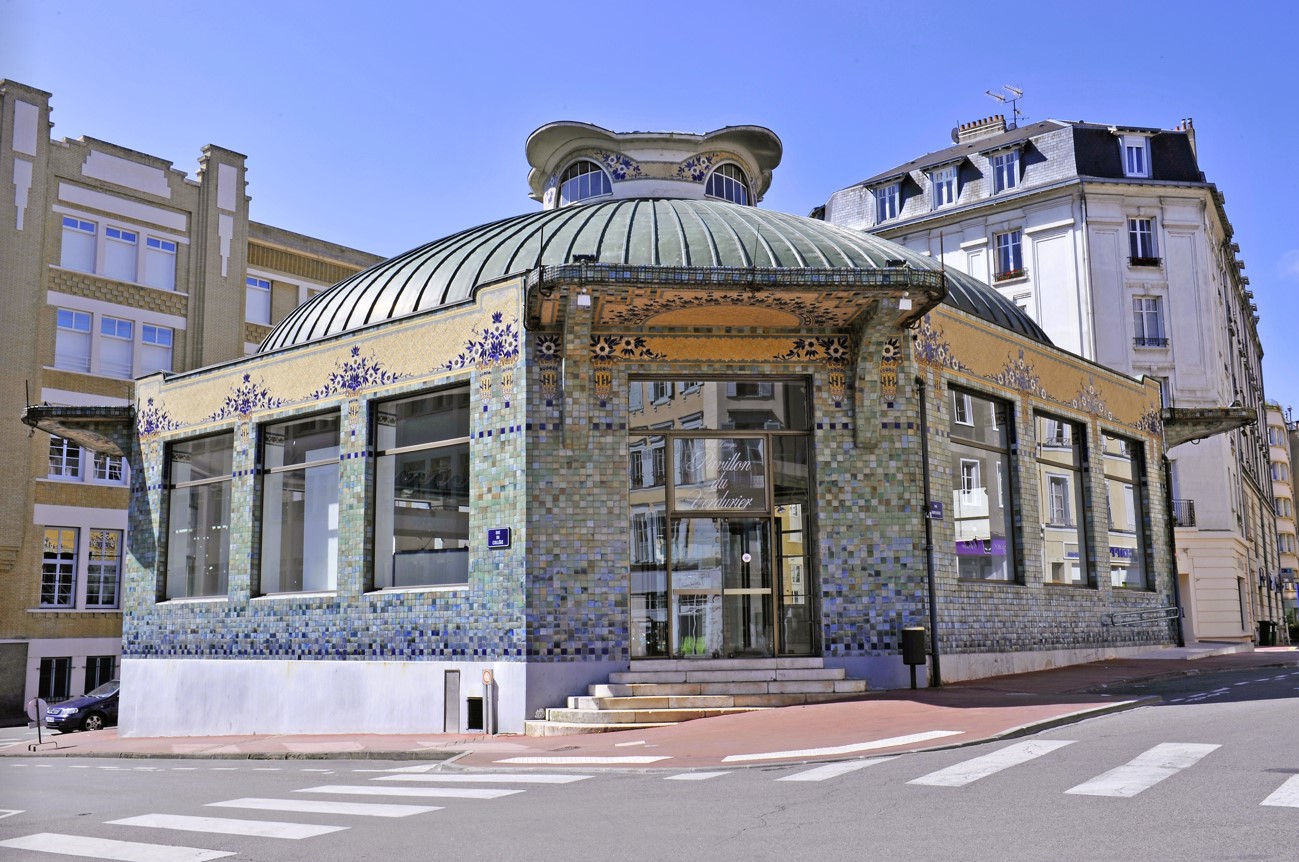 Greengrocer's pavilion ©City of Limoges
Greengrocer's pavilion ©City of Limoges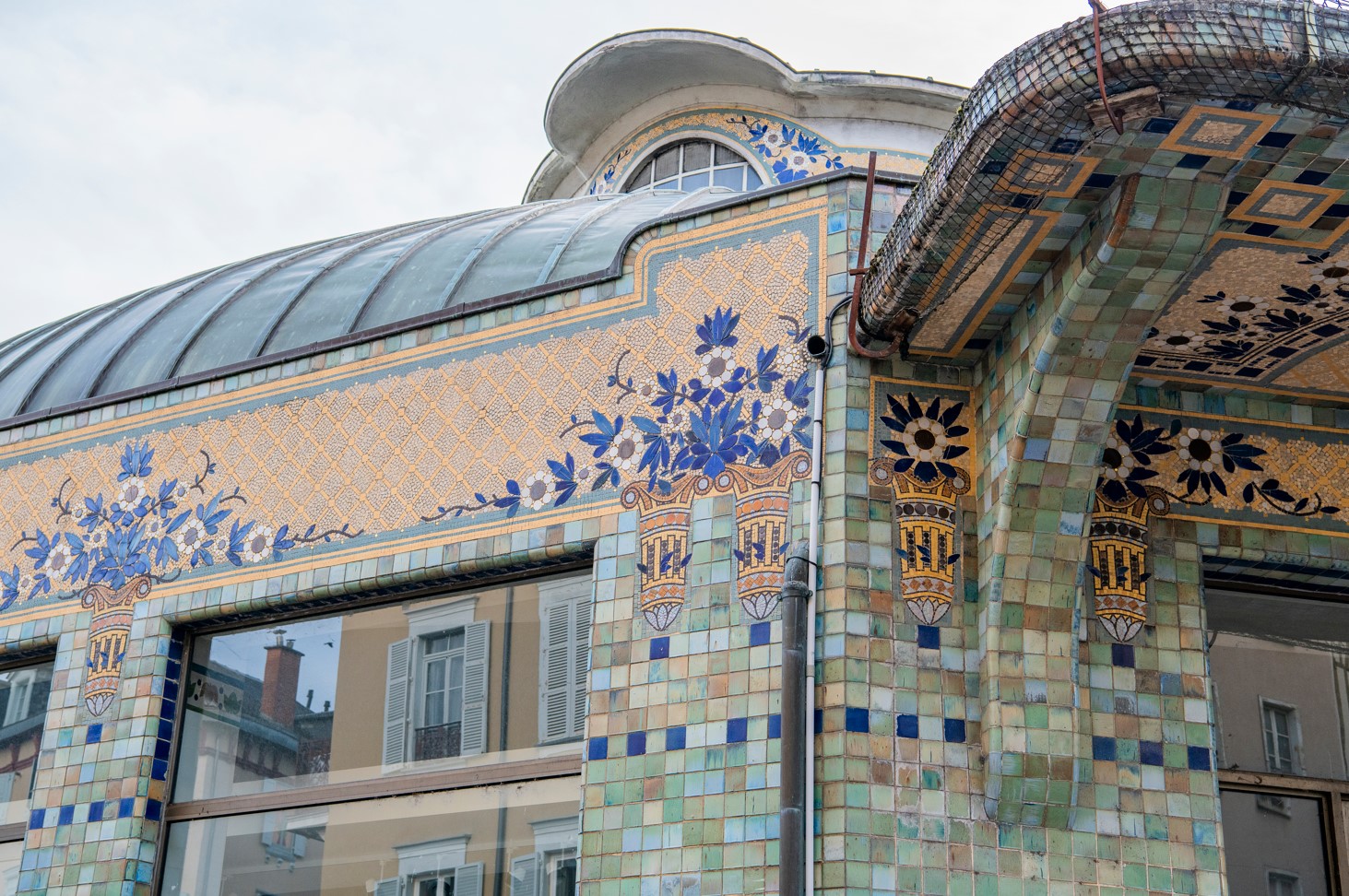 ©Laurent Lagarde
©Laurent Lagarde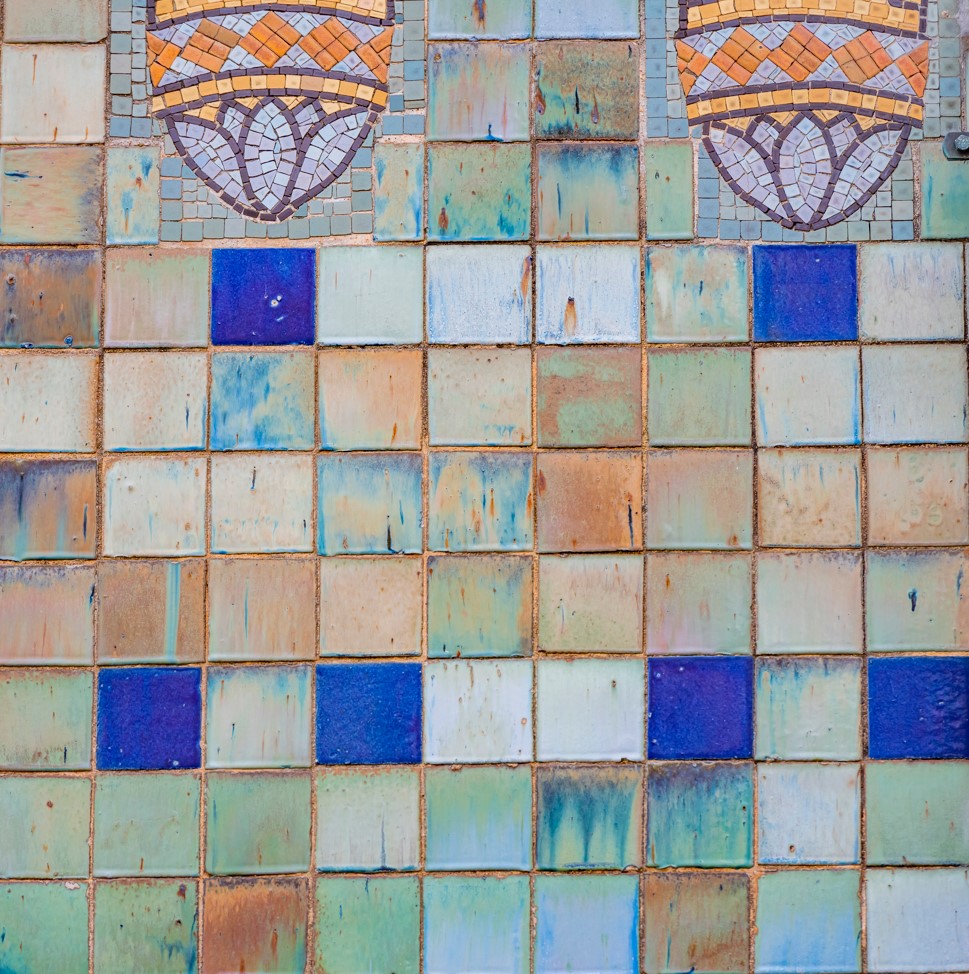 Ceramic staking ©Laurent Lagarde
Ceramic staking ©Laurent Lagarde
Duplicate a cornice
The intervention at the corner of rue Gaignolle and rue du Clocher is a pure formal game with the architecture. The piece is mirrored on the small isolated cornice in the middle of the facade. It takes up its shape and shifts it with the look of porcelain and the color treatment common to the elements of the course.
Source: FLORIAN BRILLET / NICOLAS LELIEVRE
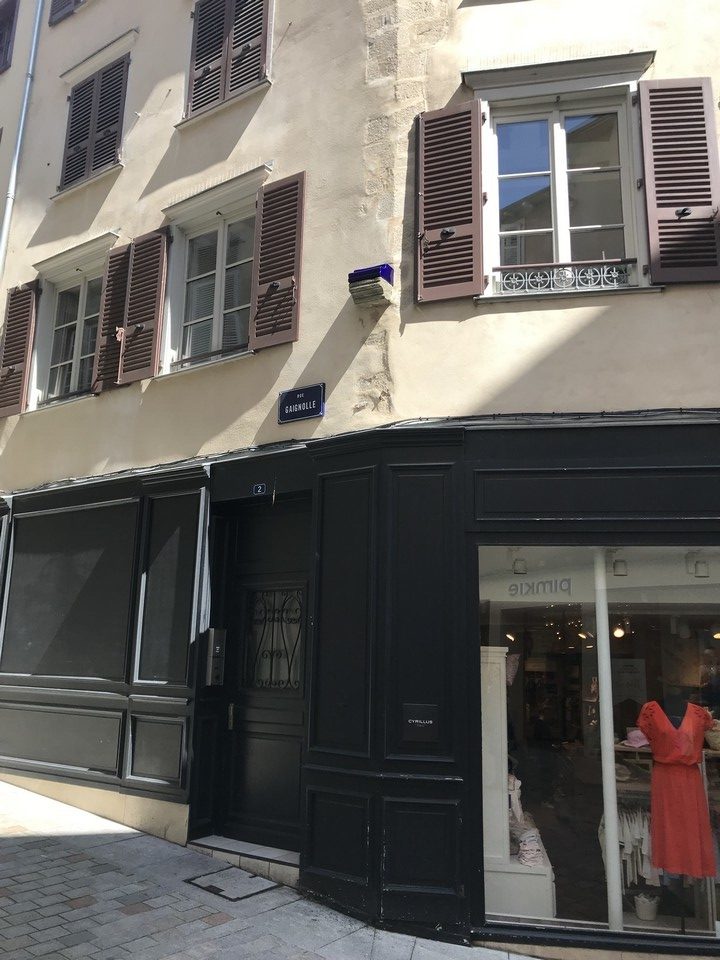 corner of rue Gaignolle and rue du Clocher ©City of Limoges
corner of rue Gaignolle and rue du Clocher ©City of Limoges
Restitution of a downspout
The impressive retaining wall of the Présidial school, rue du Portail Imbert, has an incomplete rainwater pipe. We propose to reconstruct it with porcelain elements. The piece plays with the discrepancy of the fine material and worked with a purely technical element, rarely considered to carry an ornamental or symbolic value. It is the ordinary that is valued here, reversing the usual perception of the networks of pipes and cables that we try to hide but which nevertheless ensure the functioning of the city.
Source: FLORIAN BRILLET / NICOLAS LELIEVRE
Repair of a second paving
At the corner of rue Turgot and rue A. Dubouché is a stone paving, a large portion of which seems to have been awkwardly “patched” with asphalt. We propose to replace this coating by a fine porcelain paving streaked in its thickness. The ridges enrich the paving with effects of light and texture while ensuring the non-slippery of the intervention. The proportions of the slabs and the edge-to-edge jointing in the hollow of the streaks make the whole thing different from a simple usual tiling. The figure is bordered by a listel which affirms its irregular outline and ensures its good performance. This intervention therefore does not attenuate the gap but rather proposes to take advantage of it to magnify it. The accident gives the work its shape, and the porcelain in turn gives the accident an unusual value.
Source: FLORIAN BRILLET / NICOLAS LELIEVRE
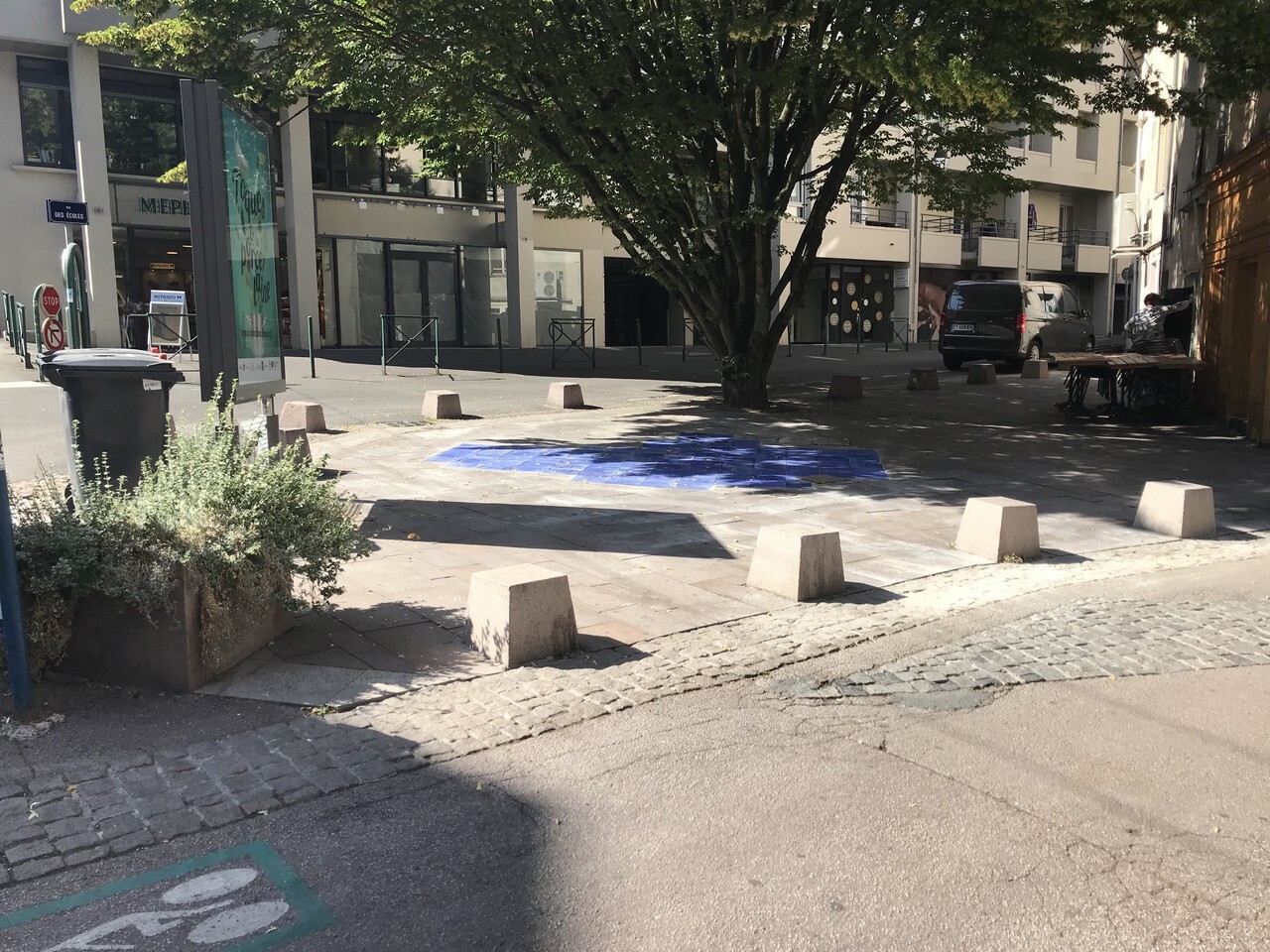 ©City of Limoges
©City of Limoges
Paving repair
This paving repair proceeds from the same intention as the intervention located a little further down rue Adrien Dubouché.
Source: FLORIAN BRILLET / NICOLAS LELIEVRE
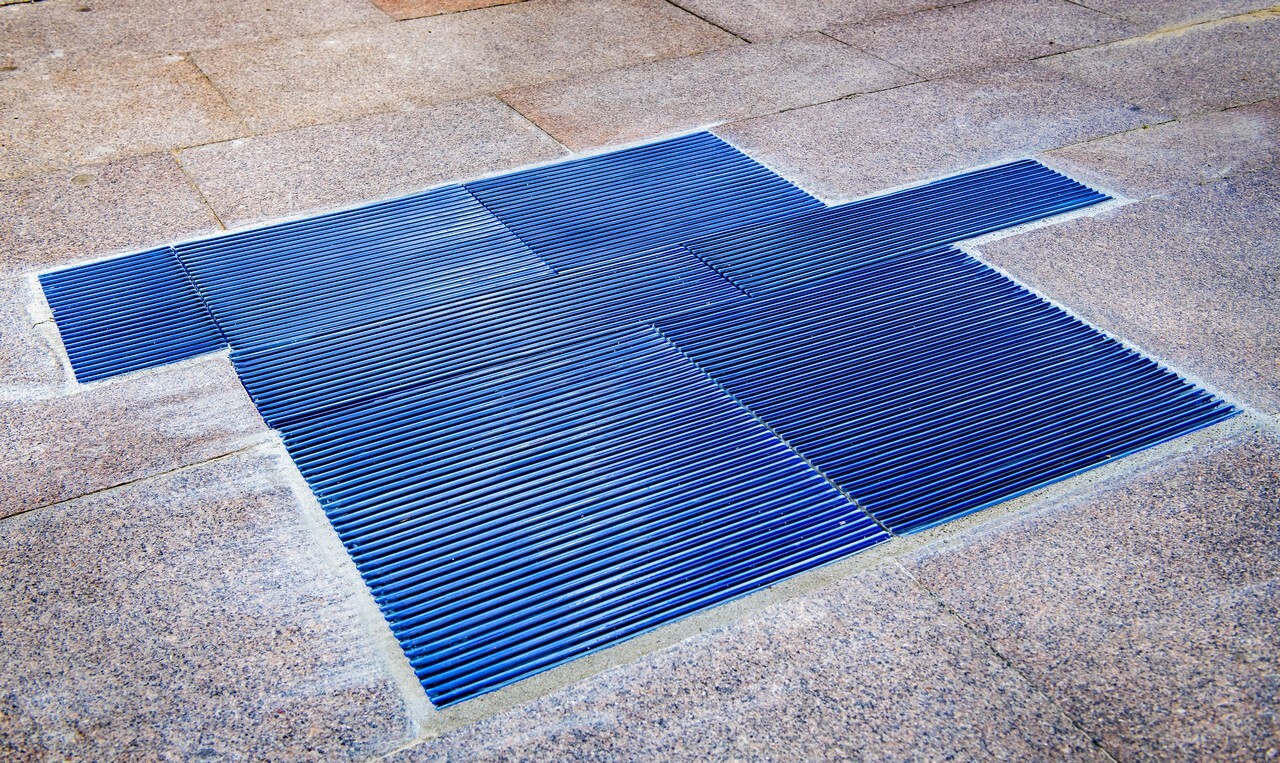 ©City of Limoges
©City of Limoges
Replacement of balusters
Three missing balusters on two entrances to the Jardin d'Orsay are taken up in porcelain, on a simplified geometry and connected to the rest of the course by the work of color. Emblematic of the project, these interventions alone summarize the main issues. They are both repairs, replacements and a quotation of the existing. These three objects restore the initial harmony of the stairs while introducing a shift through the juxtaposition of stone and porcelain.
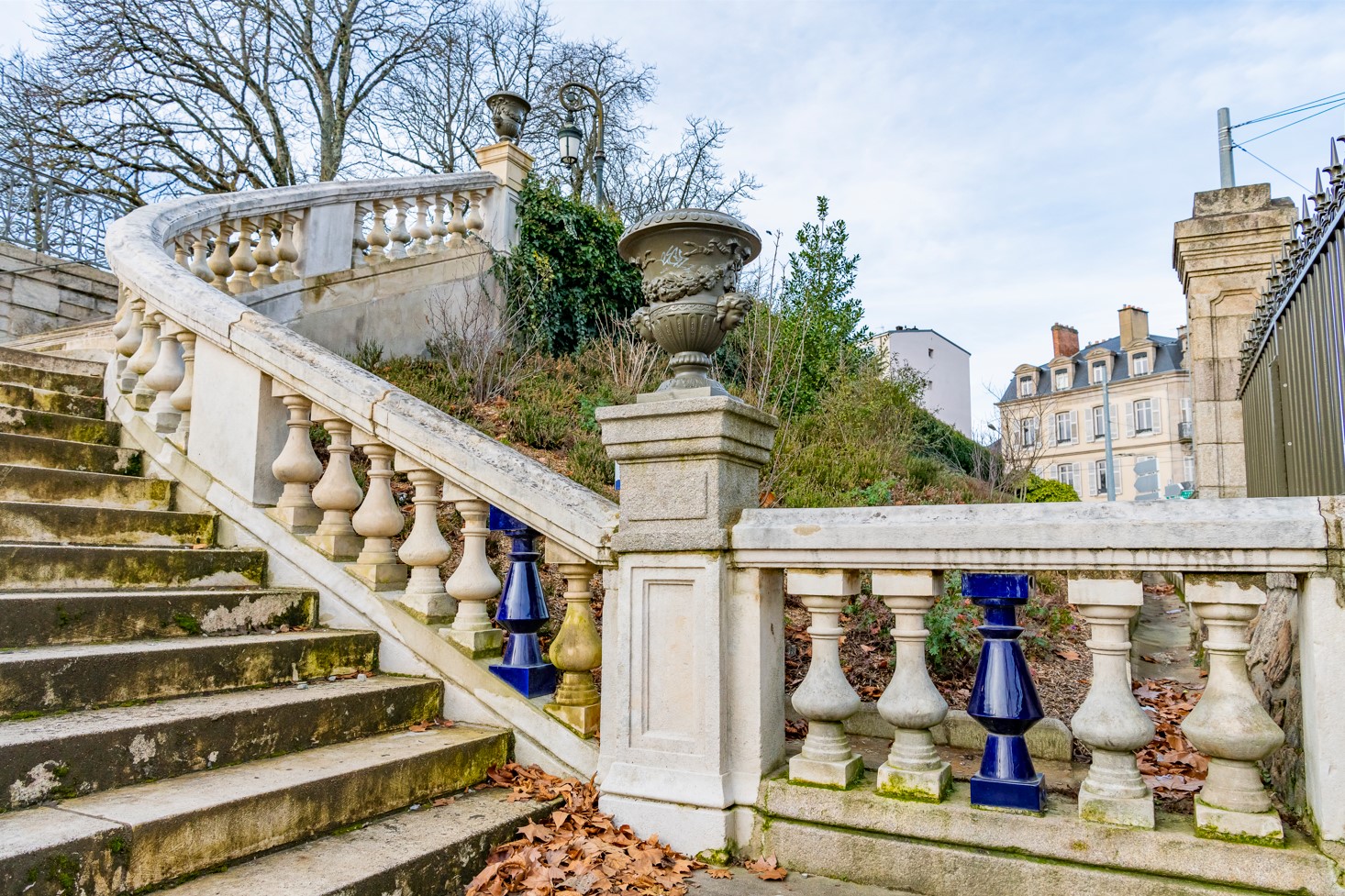 Jardin d'Orsay ©Laurent Lagarde
Jardin d'Orsay ©Laurent Lagarde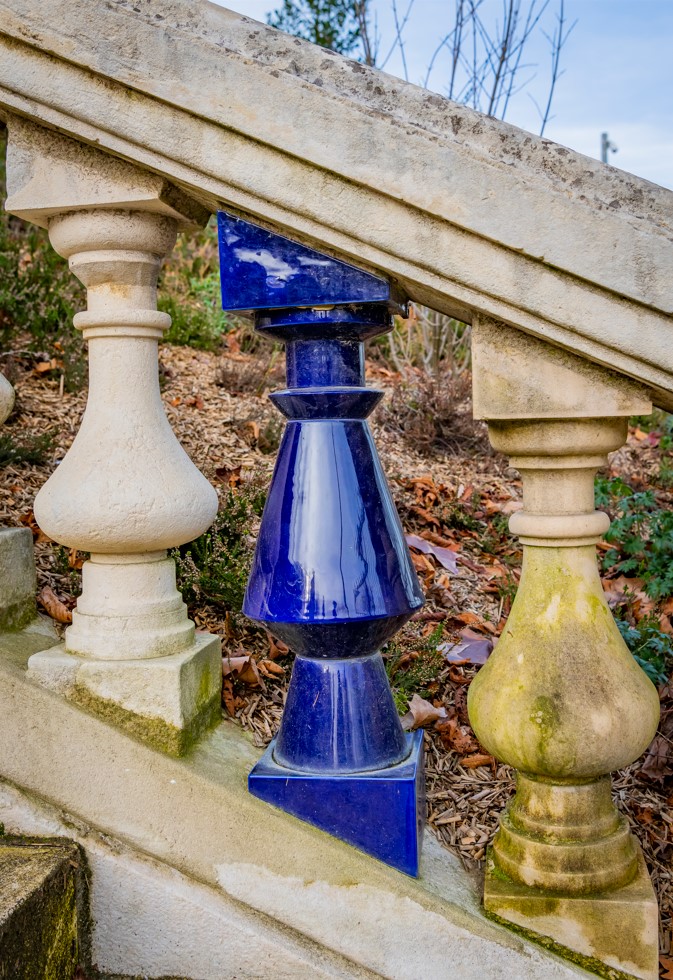 Laurent Lagarde
Laurent Lagarde
Replacement of two basins
This replacement restores to the hidden entrance of the Jardin d'Orsay the two vases which seem to have for a time completed the alignment still visible above the car park of the former Palais de Justice. Here again, it is the existing that dictates the forms to be produced, the two porcelain vases taking up a simplified geometry of the objects still in place. The work on the color ensures consistency with the other elements of the course.
Source: FLORIAN BRILLET / NICOLAS LELIEVRE
Replacing a building number
This intervention is a pure and simple replacement of the plaque at n°8 rue Othon Peconnet, which is no longer in place. Discreet, this intervention fulfills a precise and essential function while asking the visitor of the course to open a particularly attentive eye. It is one of the most secret parts of the course.
Source: FLORIAN BRILLET / NICOLAS LELIEVRE
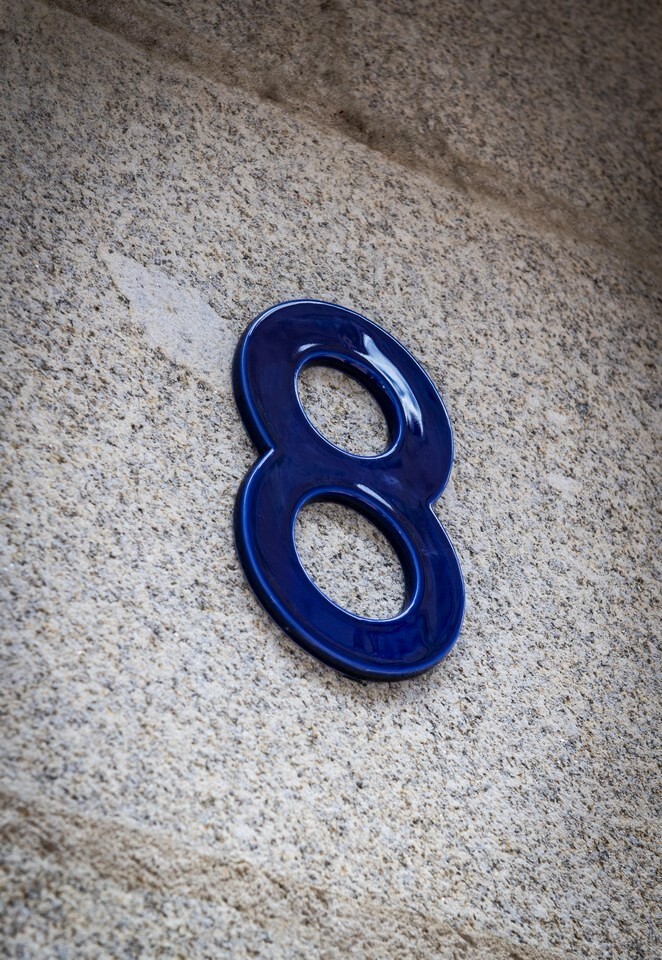
Re-occupation of a niche
Located at the corner of rue Adrien Dubouché and place de la Motte, this intervention plays in an unexpected way with the scale of the place. The object is as small and discreet as the place is vast and open. In contrast to a monumental approach, the porcelain piece here adopts the posture of a small hidden treasure on a scale comparable to that of a piece of tableware.
The piece is housed in a small vacant niche on the entrance pediment of 44 place de la Motte. It will be made from a mold with the exact dimensions of the niche so as to produce a 14% smaller replica after the porcelain has been fired. What is at stake here is therefore as much the niche itself as an essential element of the porcelain manufacturing process.
Source: FLORIAN BRILLET / NICOLAS LELIEVRE
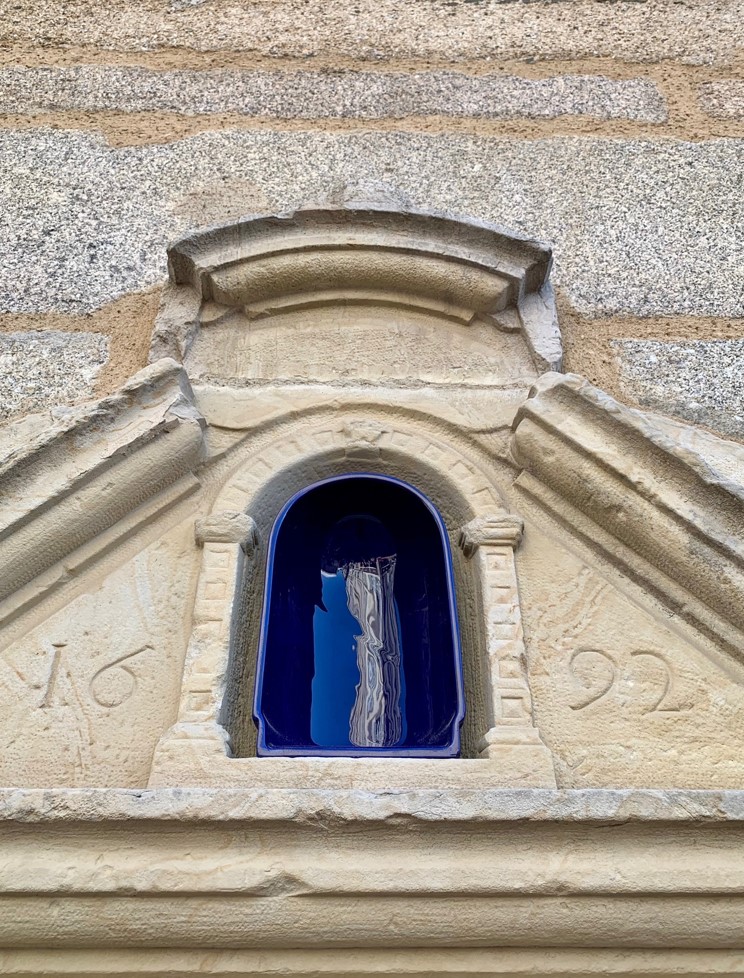 44 Place de la Motte ©D Lacote – City of Limoges
44 Place de la Motte ©D Lacote – City of Limoges
Replacement of a wall gable
This intervention completes the concrete “stump” at the end of the Haute Vienne ramp. This strange volume is topped with a striated surface in oven-blue enameled porcelain, on a principle also applied to other interventions. This is a finish on an imposing object and without quality despite its strategic location. A veritable gateway to Place Haute Vienne, it seems appropriate to give this concrete block a new value. The intervention can also be seen as a milestone that marks the entrance to the historic city center.
Source: FLORIAN BRILLET / NICOLAS LELIEVRE
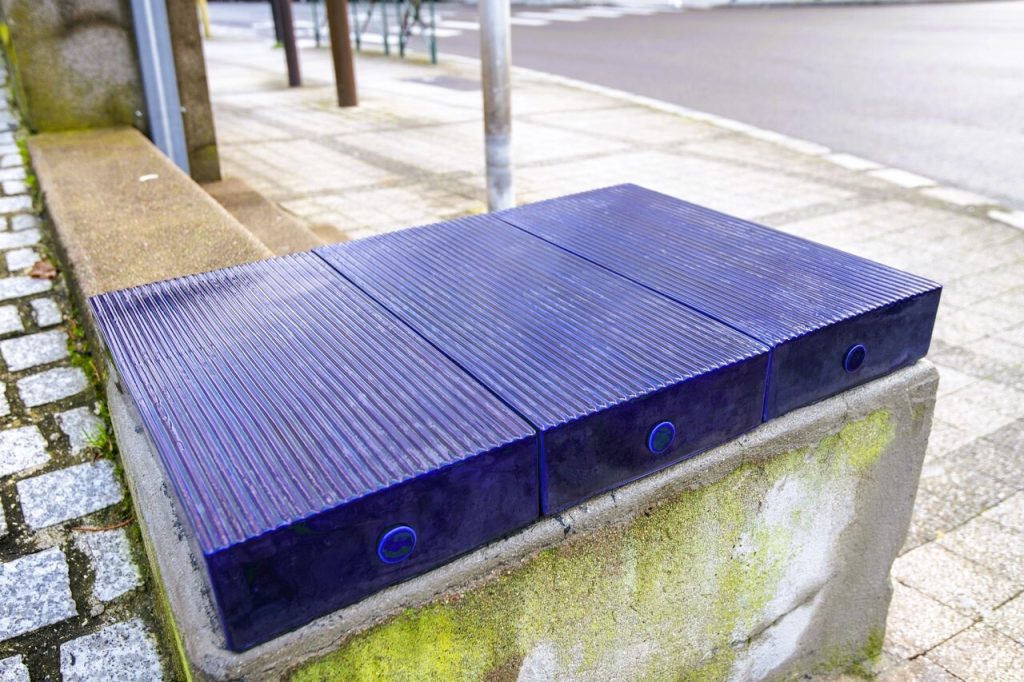 Haute Vienne ramp ©City of Limoges
Haute Vienne ramp ©City of Limoges
Replacement of 2 vases
This intervention restores to the Museum of Fine Arts the two large vases missing at the ends of the courtyard on the park side. It echoes the two vases in the Jardin d'Orsay, in a place of high symbolic value.
Source: FLORIAN BRILLET / NICOLAS LELIEVRE
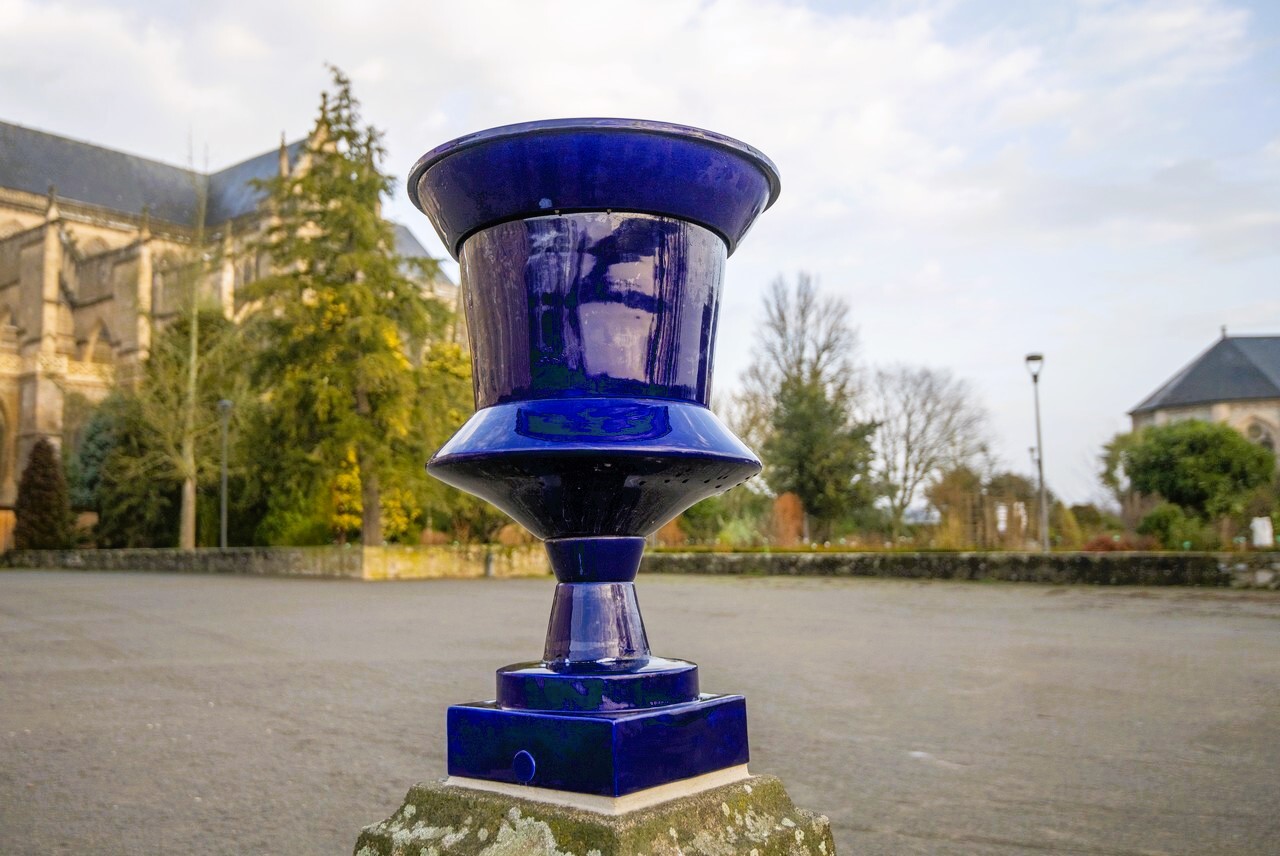 Bishop's Garden ©Laurent Lagarde
Bishop's Garden ©Laurent Lagarde
Replacement of a seat
The recent development of the Cathedral forecourt offers wooden foundations mounted on mineral blocks. One of them being missing, we propose to restore the seat function by arranging simple porcelain modules straddling the stone.
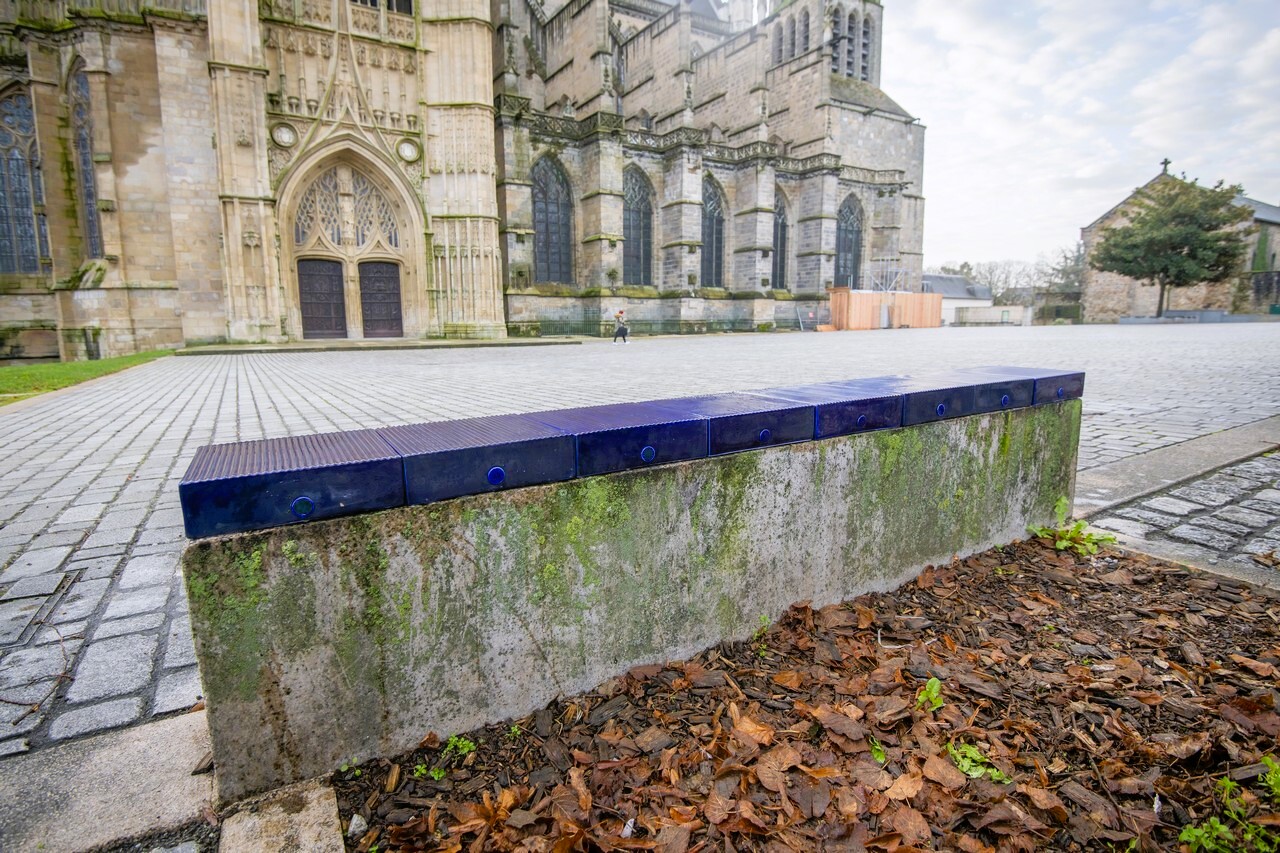 Place Saint Etienne ©City of Limoges 2
Place Saint Etienne ©City of Limoges 2
Duplicate a cornice
In direct proximity to the Pont St Etienne intervention, this room marks the arrival at the top of the access climb to the old town. The volume leans on an existing cornice and operates on a principle similar to that used at the corner of rue de Gaignolle and rue du Clocher. The offsets of the initial shape are not kept but echoed by a series of grooves at the same intervals.
Source: FLORIAN BRILLET / NICOLAS LELIEVRE
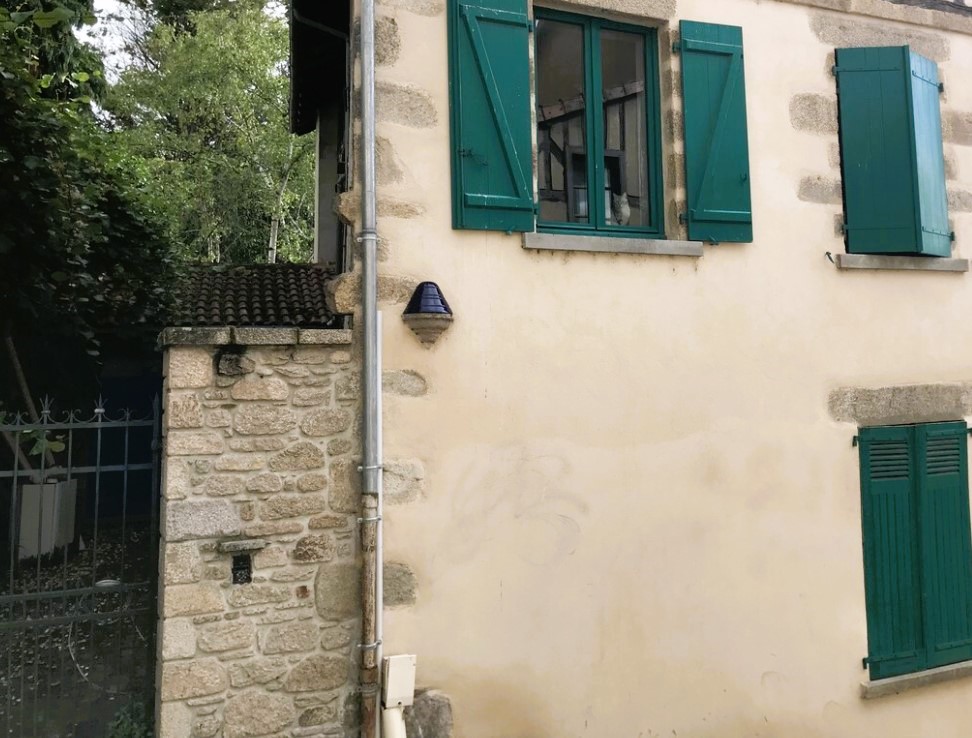 19 rue du pont St Etienne Corniche ©City of Limoges
19 rue du pont St Etienne Corniche ©City of Limoges
Replacing an ornament
In front of 7 avenue du Général de Gaulle, a ball of the railing separating from the railway is missing. The intervention replaces it with a blue enamelled ceramic version.
Source: FLORIAN BRILLET / NICOLAS LELIEVRE
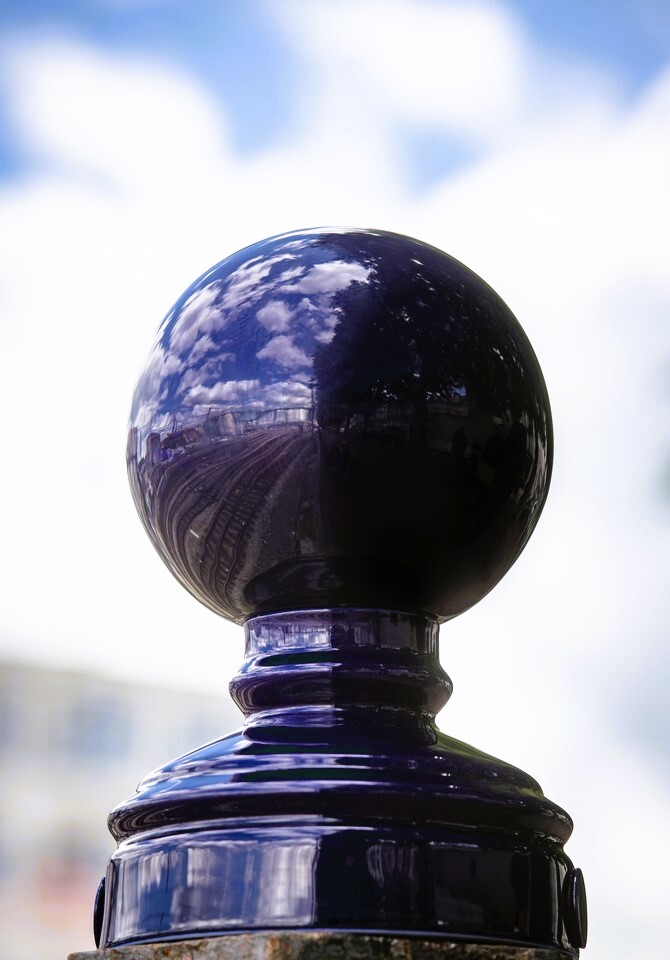 16 av General De Gaulle ©Laurent Lagarde
16 av General De Gaulle ©Laurent Lagarde
